The secrets behind Egypt's most historic treasures
- Oops!Something went wrong.Please try again later.
A glimpse into the past
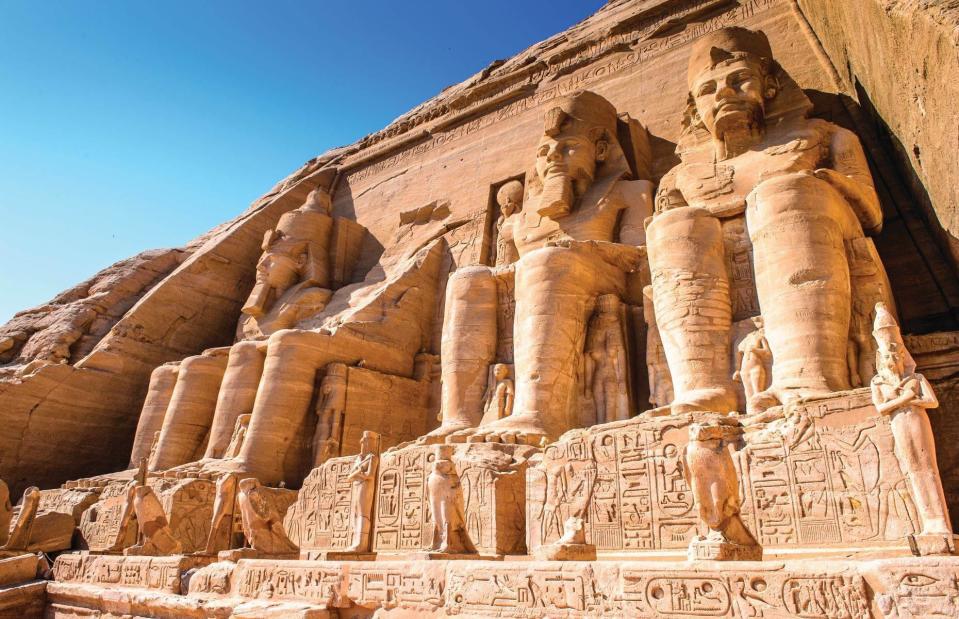
Anton_Ivanov/Shutterstock
Once one of the greatest and most powerful civilisations in history, the ancient Egyptians have left behind some of the world’s greatest treasures. With the help of book Ancient Egypt: Visual Explorer Guide by Peter Mavrikis, here we uncover some of ancient Egypt’s most jaw-dropping wonders.
From the mighty pyramids of Giza to the glorious temples of Luxor, explore these stunning images capturing the beauty of Egypt’s historic sights.
Tomb of Tutankhamun, Valley of the Kings, Luxor
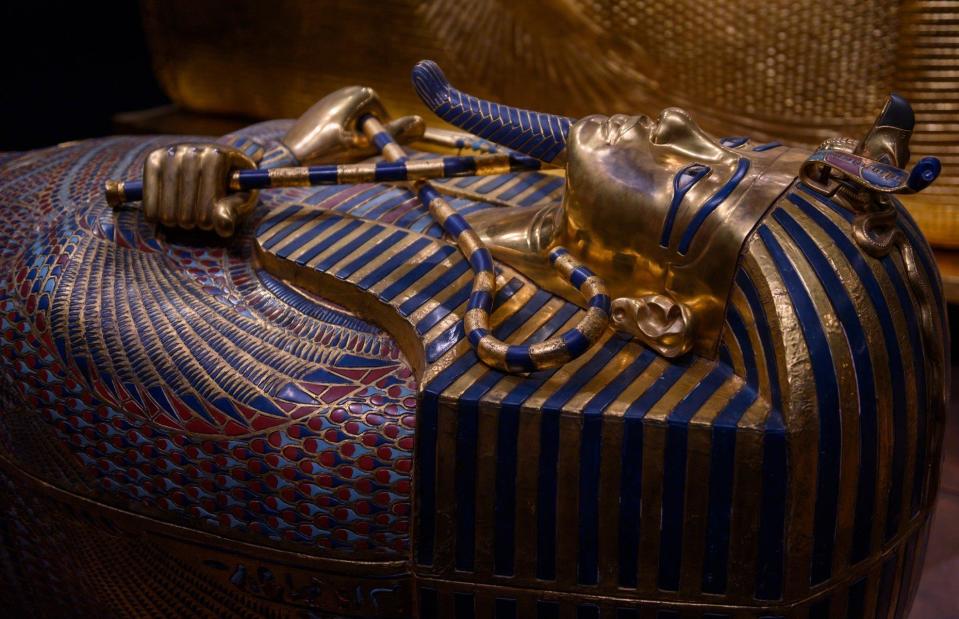
Fresnel/Shutterstock
This glittering golden mask is one of the most recognisable treasures of the ancient world. Created for the famous King of Egypt Tutankhamun (1333–1323 BC), the son of Amenhotep IV and final ruler of his line, the tomb was discovered by British Egyptologist Howard Carter in 1922.
The funerary mask of Tutankhamun, Valley of the Kings, Luxor
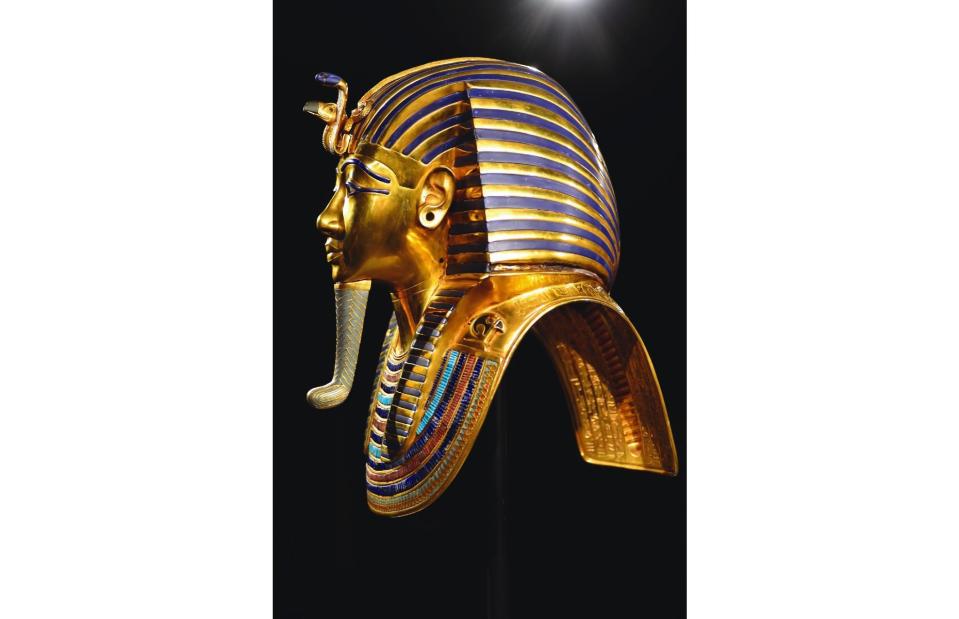
Mountainpix/Shutterstock
Nicknamed the death mask, it weighs roughly 10.23kg (22.5 pounds) and shows the king wearing a royal neme (meaning striped) headdress and fake beard. On his forehead are the goddesses Nekhbet (a vulture) and Wadjet (a cobra) while the back of the mask features inscriptions from the Book of the Dead, an ancient text. The mask is one of the most iconic symbols of ancient Egypt.
Mortuary Temple of Hatshepsut, Deir el-Bahari
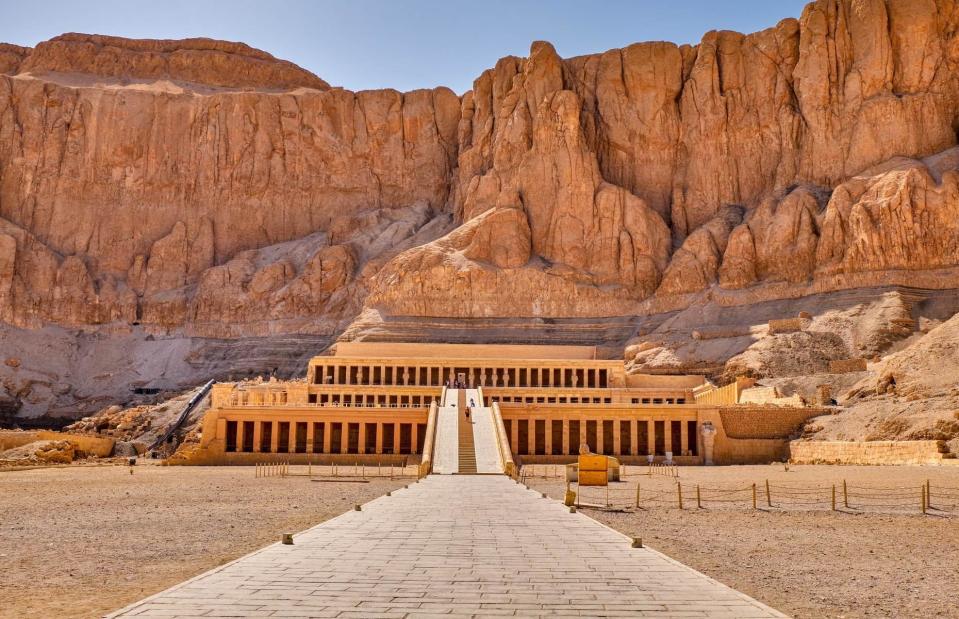
Mirko Kuzmanovic/Shutterstock
Nestled at the foot of a cliff on the West Bank of Luxor, this majestic temple took an eye-watering 15 years to complete. Built for the 18th dynasty pharaoh Hatshepsut who died in 1458 BC, the building rises 97 feet (30m) high and stretches across three levels. At one point the first tier on the temple’s ground floor would have been surrounded by well-kept shrubs and trees. A track that stretches roughly 100 feet (30m) links the different levels.
Tomb of Mereruka, Saqqara
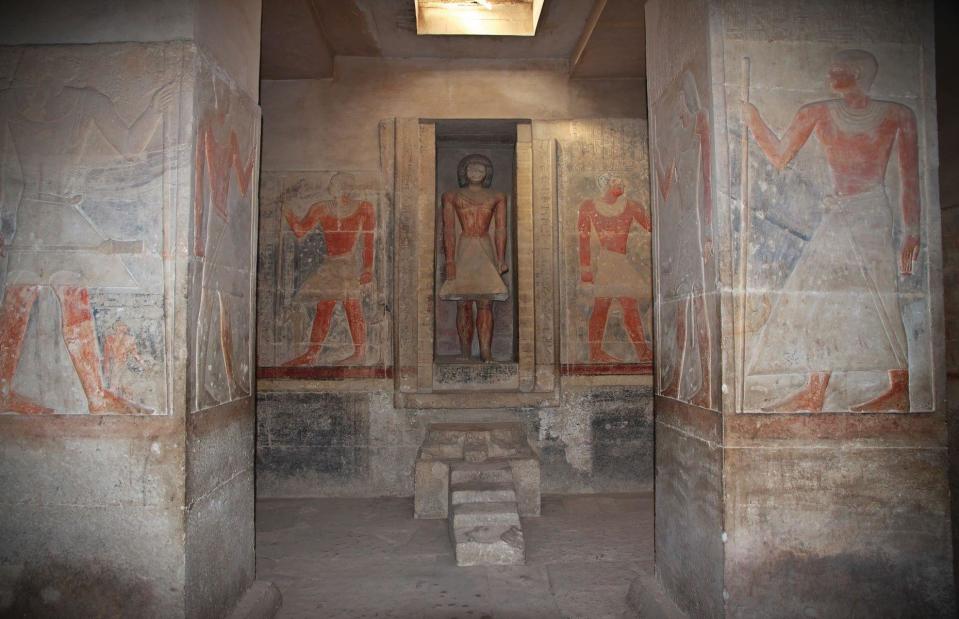
Sergey-73/Shutterstock
Famed for being the largest and most impressive of the non-royal ancient Egyptian funeral sites, this magnificent tomb can be found in the vast burial ground of Saqqara. The tomb was built for Mereruka, a once-powerful vizier (a high-ranking political advisor) who served King Teti (2345–2323 BC) the first pharaoh of the sixth dynasty. The spectacular site is home to 33 chambers, including the decorative room pictured here, with a statue of the Egyptian vizier himself.
Mortuary Temple, Pyramid of Djoser, Saqqara
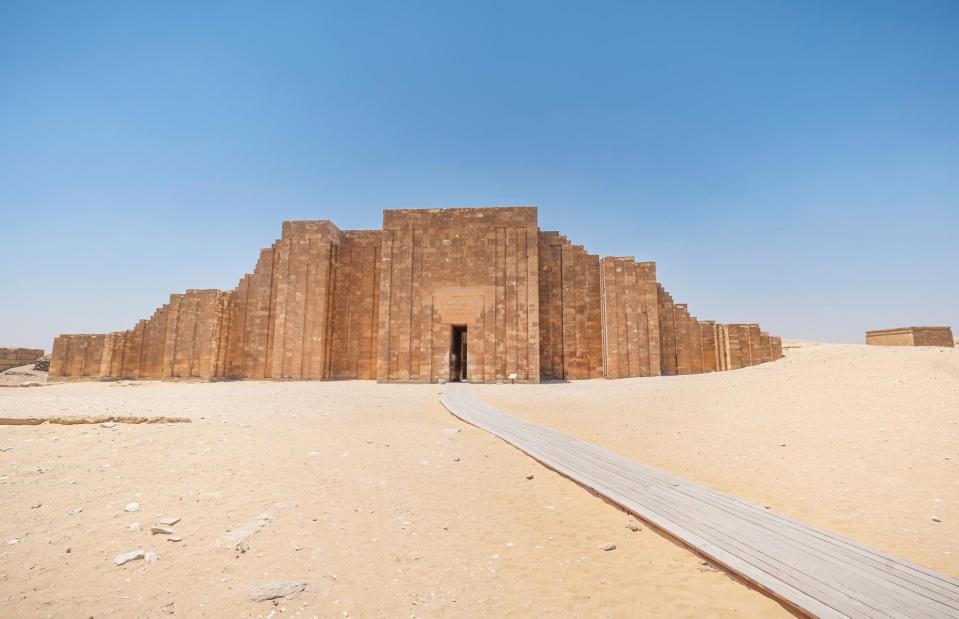
diy13/Shutterstock
Another wonder of the Saqqara necropolis, this mortuary temple was built during the third dynasty (2670–2613 BC). The temple’s outer wall was constructed using stone instead of mud-brick, the preferred building material of the period. Standing roughly 35 feet (10.6m) high, its sole entrance features a very narrow passage that opens up into a walkway framed by a series of columns. Love this? Follow our Facebook page for more travel inspiration
Red Pyramid, Dahshur
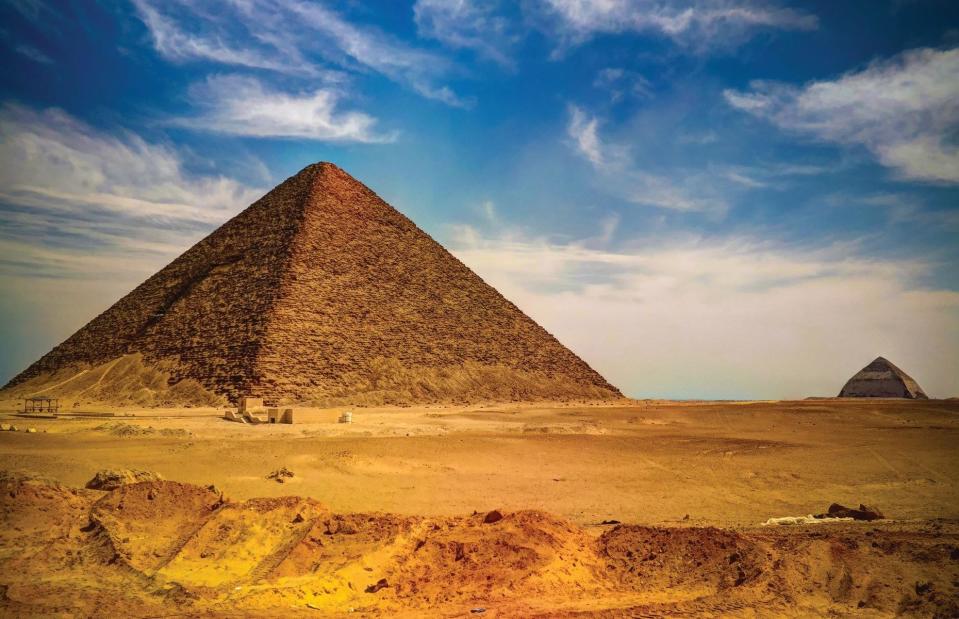
Homo Cosmicas/Shutterstock
Also known as the North Pyramid, this magnificent monument is the largest pyramid in the Dahshur necropolis roughly 25 miles (40km) south of Cairo. Another structure built for King Sneferu, it is the third-largest pyramid after the great pyramids of Khufu and Khafre and is named after the distinct red shade of the limestone used when it was built.
The entrance of the Great Temple, Abu Simbel
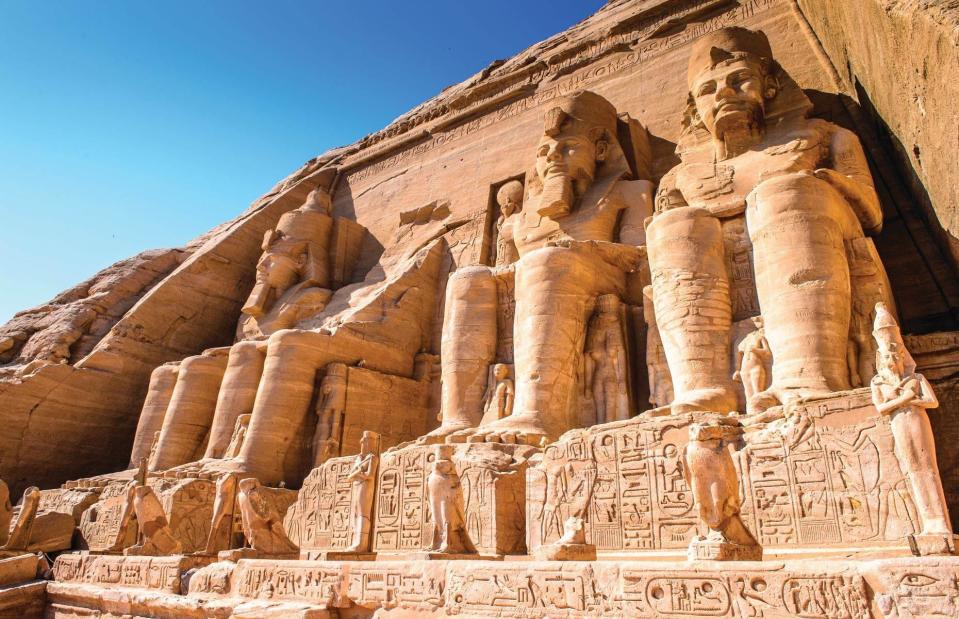
Anton_Ivanov/Shutterstock
Situated in southern Egypt near the border with Sudan, this enormous site was built during the reign of Ramses II (1279–1213 BC) in the 19th dynasty. The complex is home to the Great Temple and the Small Temple, also known as the Temple of Nefertari. The largest of the two, the Great Temple (pictured) is guarded by four massive 65 foot-high (20m) statues of the king wearing the double crown of Upper and Lower Egypt.
Temple of Nefertari, Abu Simbel
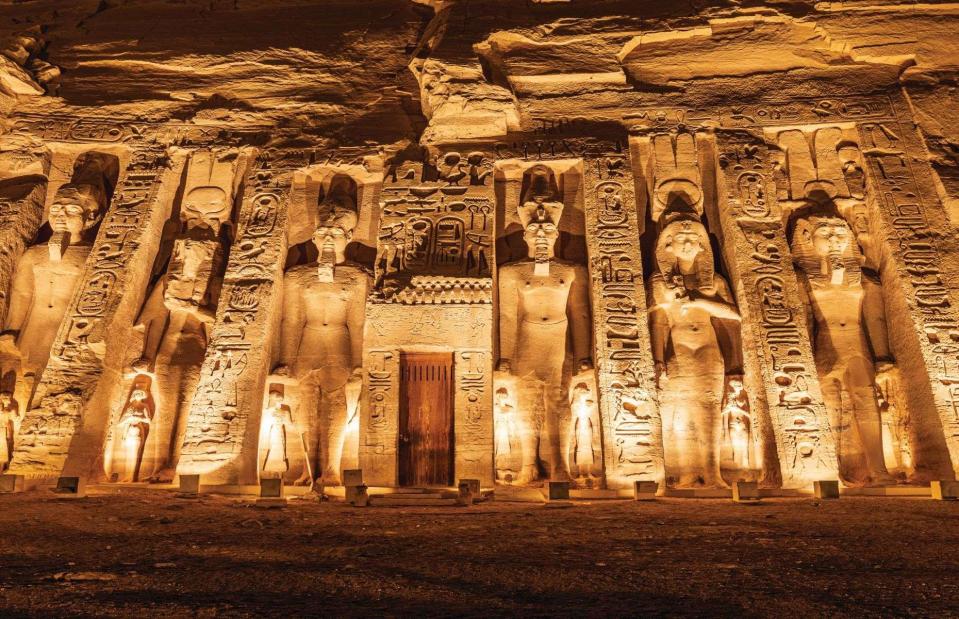
Emily Marie Wilson/Shutterstock
Carved into the mountainside alongside the Great Temple, this fine structure was built for Queen Nefertari, the first wife of King Ramses II and dedicated to Hathor, the goddess of love, joy and fertility. Four colossal statues guard the entrance of the temple, including one showing the queen herself, standing 32 feet (10m) high.
Temple of Nefertari, Abu Simbel
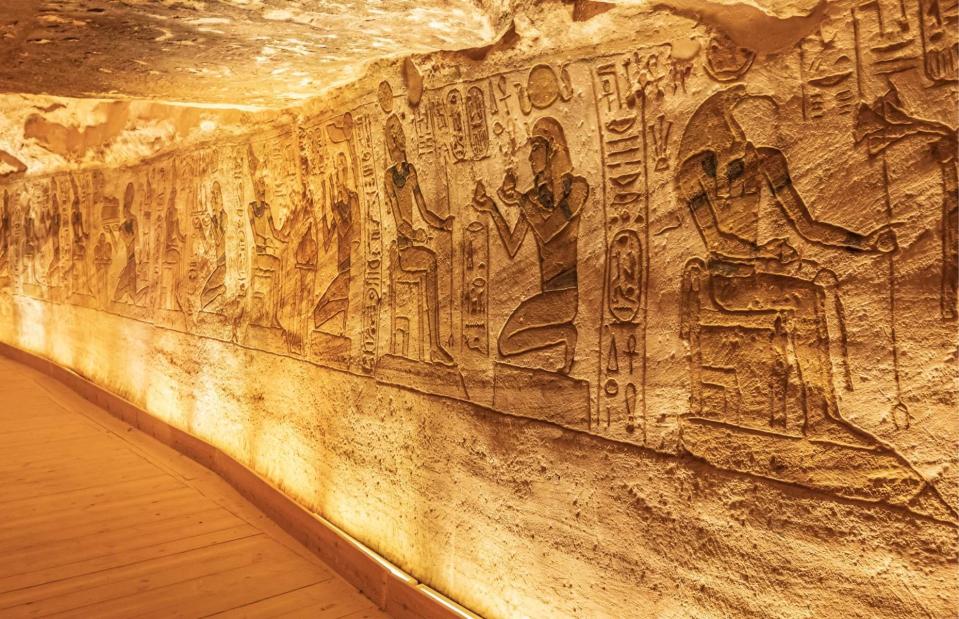
Emily Marie Wilson/Shuttestock
Inside, finely etched walls cover the temple’s interior, showing images of Queen Nefertari alongside gods and goddesses. Two columns that are opposite depict images of the goddess Hathor, who was also the consort of the sun god Ra. The Ancient Greeks associated Hathor with Aphrodite, who was their goddess of love and fertility.
Luxor Temple, Luxor
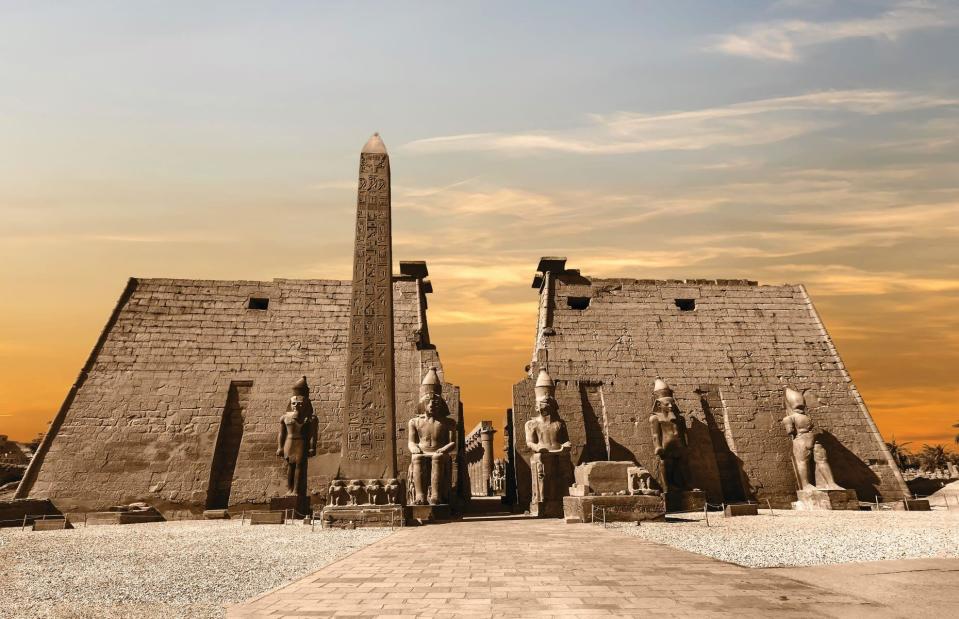
agsaz/Shutterstock
Largely built by pharaoh Amenhotep III (1386–1353 BC) during his reign, this grand temple in Luxor was continued by several other pharaohs including Tutankhamun and Ramses II. Built during the 18th dynasty, the statue on the left is one of the two seated figures of Ramses II, guarding each side of the temple’s entrance. Measuring 46 feet (14m) high, the pink granite statue shows the ruler wearing a traditional royal headdress.
Pyramid of Menkaure, Giza Plateau, Cairo
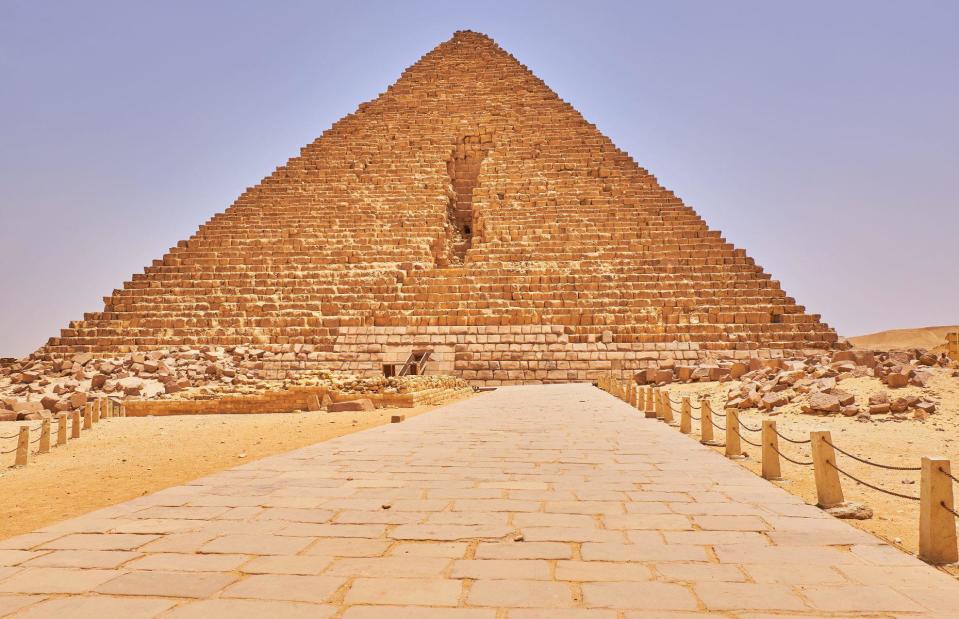
Mirko Kuzmanovic/Shutterstock
Completed in the 26th century BC, the pyramid of Menkaure is the smallest of the three Great Pyramids of the Giza Plateau. The structure was built for King Menkaure, and was the last pyramid of the site and stands alongside the pyramids of the king’s father (Khafre) and his grandfather (Khufu). Although the pyramid measures just 213 feet (65m) high, it is hailed as one of the most stunning landmarks of ancient Egypt.
Khufu Ship, Giza Plateau, Cairo
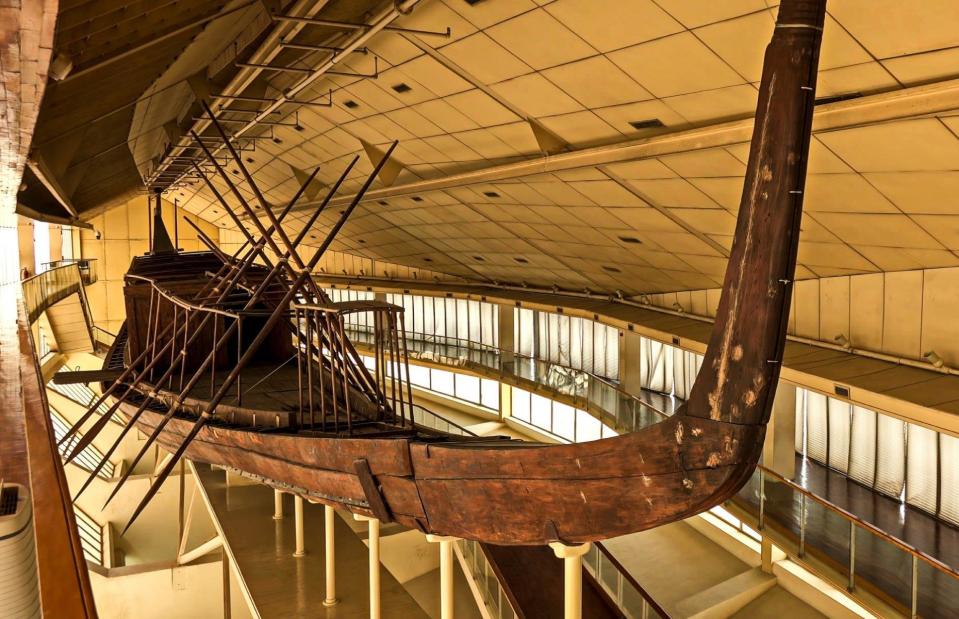
TravelSH/Shutterstock
Discovered in 1954 by an Egyptian archaeologist, this spectacular ship was found buried in pieces at the base of the Great Pyramid of Giza. Dating back to around 2500 BC, a staggering 1,224 dismantled pieces of the ship were found sealed inside the pyramid. The ship is believed to have belonged to the great pharaoh Khufu, built as a solar ship to take him to the afterlife. It took 14 years to piece the ship back together and today, the 144 foot-long (44m) vessel can be found in its dedicated Solar Boat museum.
Solar Court, Luxor Temple, Luxor
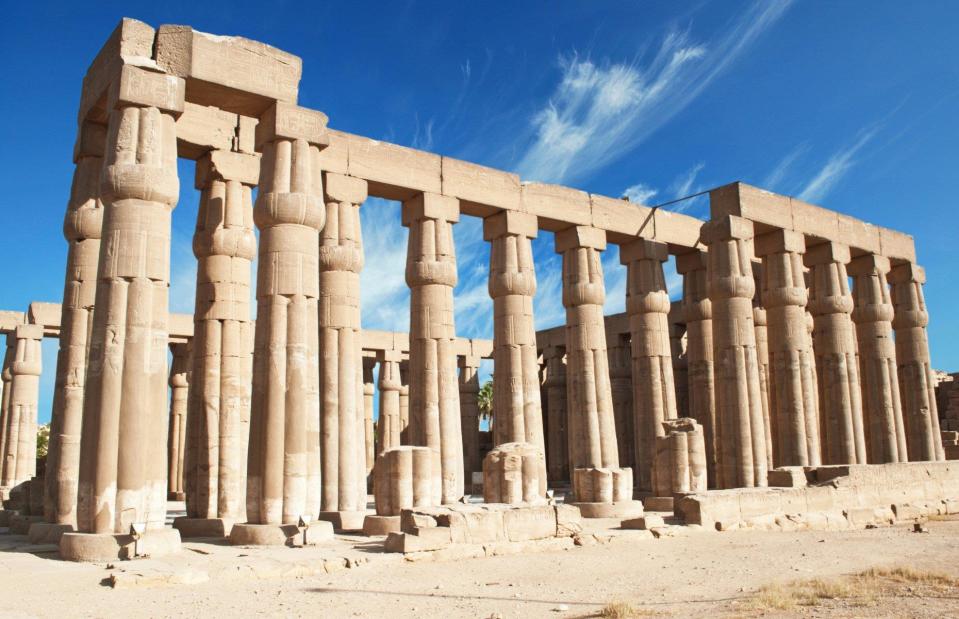
Waj/Shutterstock
Framing the east bank of the river Nile, this impressive open-air structure can be found within Luxor’s temple complex. With its peristyle architecture, the court is flanked with rows of papyrus columns on three of its sides. Built around 1400 BC over hundreds of years, the city’s ancient ruins are one of the most visited historical sites in Egypt.
Mastaba of Seshemnefer IV, Giza Plateau, Cairo
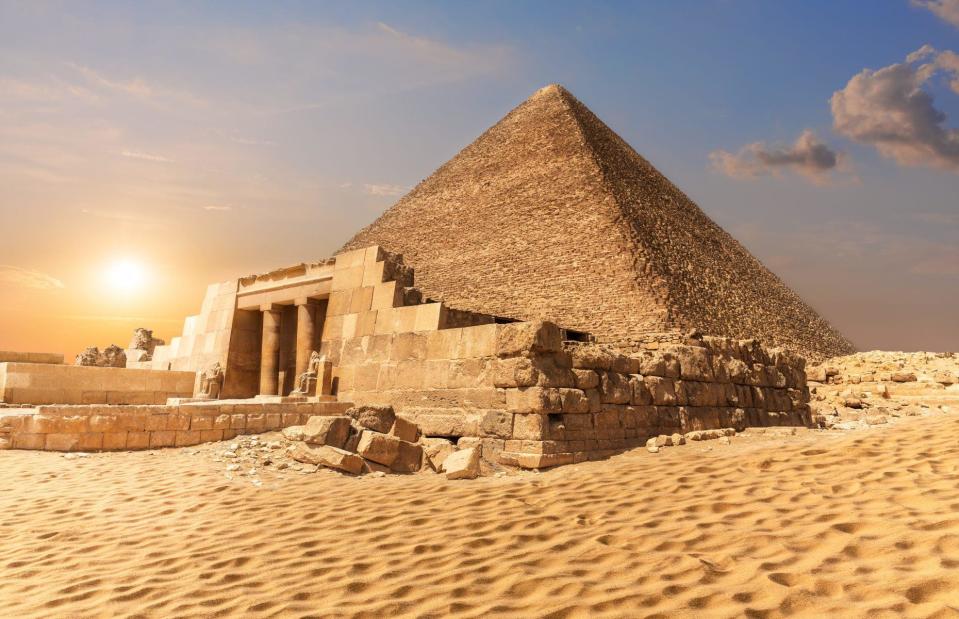
AlexAnton/Shutterstock
Sat at the foot of the Great Pyramid of Khufu, this burial site dates back as far as the sixth dynasty (2340 BC). The tomb is the final resting place for Seshemnefer IV, a highly ranked and favoured official who attended to the pharaoh. Two large statues of Seshemnefer IV can be seen guarding the outside of the ancient structure. Within its mighty walls, reliefs depicting scenes and activities from the official’s life including hunting and harvesting are on display.
Temple of Esna, Esna
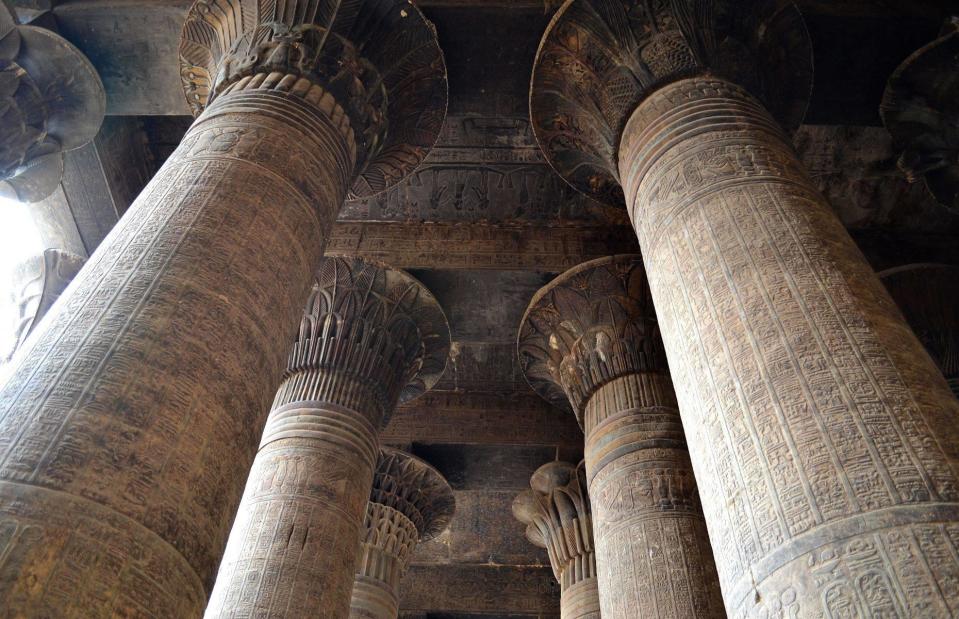
JasonHealy/Shutterstock
One of its namesake city’s most breathtaking sights, this image shows just a few of the columns carved from red sandstone that line the Temple of Esna’s hypostyle hall. The hall consists of 24 columns and is decorated with art on the walls showing both Ptolemaic and Roman rulers dressed in the clothing of the pharaohs. Many of these inscriptions show the foreign emperors presenting offerings to Khnum, the ram-headed fertility god that the temple is dedicated to.
Roman Baths, Kom el-Dikka, Alexandria
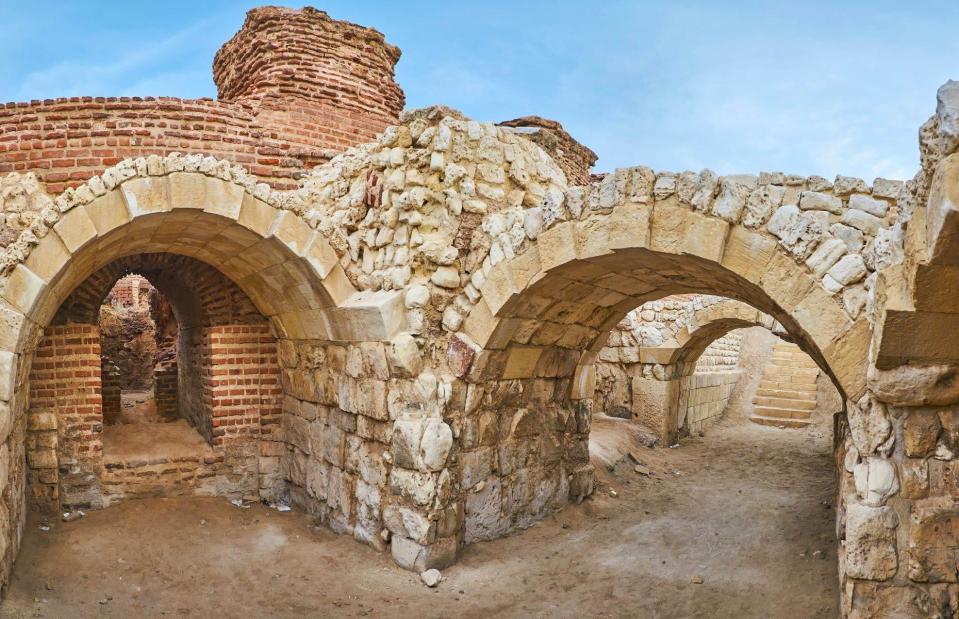
eFesenko/Shutterstock
Although the Kom el-Dikka site was primarily the home of wealthy families during the Greco-Roman period, it also provided residents with access to a bathhouse. Known at the time as the “Park of Pan”, the bathhouse was thought to have been destroyed by a fire in the third century AD.
Avenue of Sphinxes, Luxor
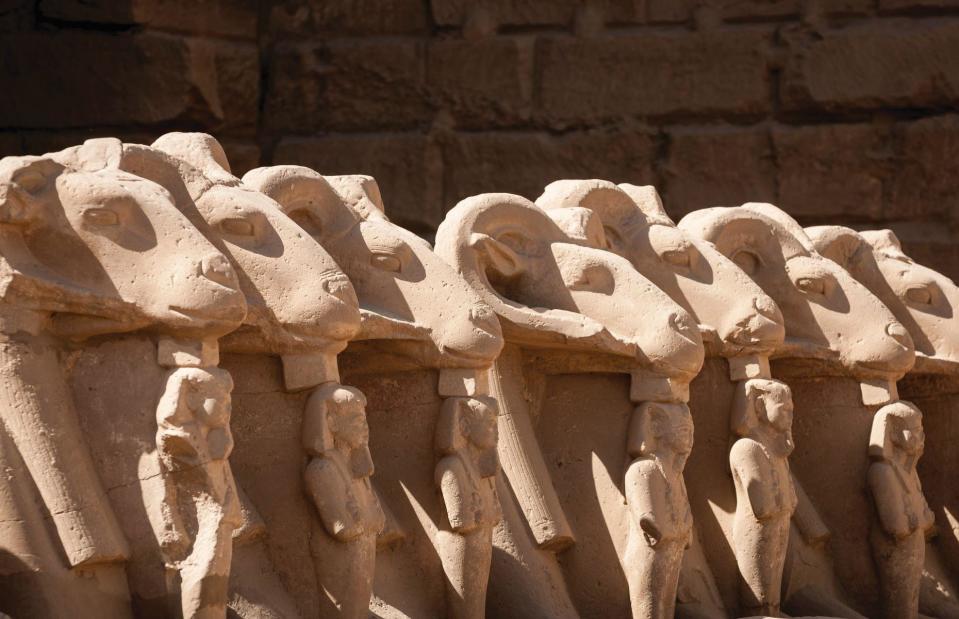
PeskyMonkey/Shutterstock
Another ancient treasure of Luxor, this image shows several stone sphinxes that have ram heads instead of the traditional human heads. Stretching over one and a half miles long (3km), the sphinxes are thought to have once trailed between the temples of Luxor and Karnak and are now one of the city’s most impressive ancient sights.
Bent Pyramid, Dahshur
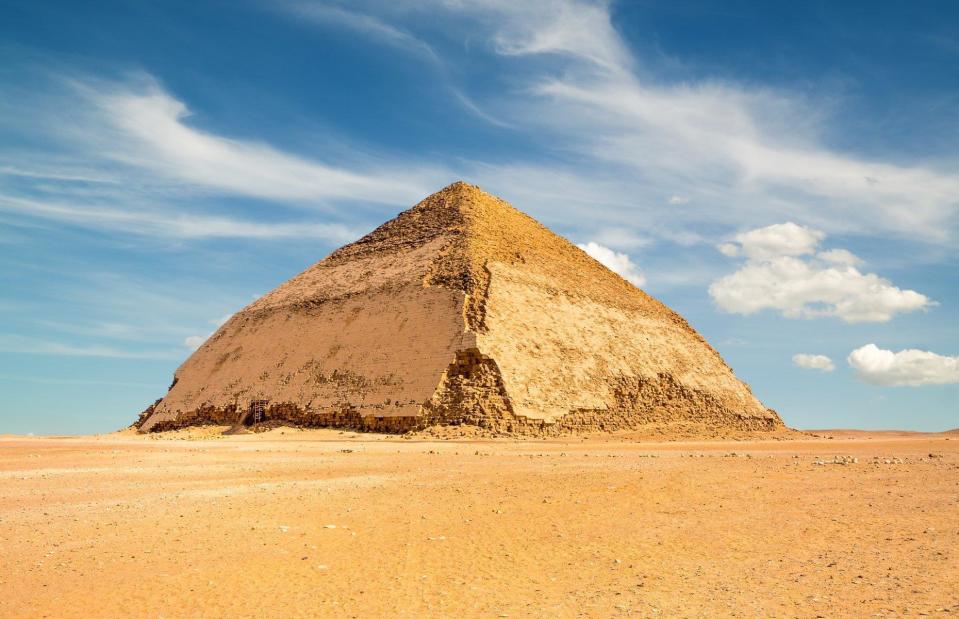
Gurgen Bakhshetyan/Shutterstock
Dating back nearly 4,000 years ago, this unique structure was built by King Sneferu (2613–2589 BC) who was the father of Khufu and the first king of Egypt’s fourth dynasty. The lower part of the pyramid rises at an angle of 54 degrees, built in the smooth limestone common in other pyramids, while the rest of the structure slopes at a 43-degree angle, hence its funny shape.
Temple of Hibis, Kharga Oasis
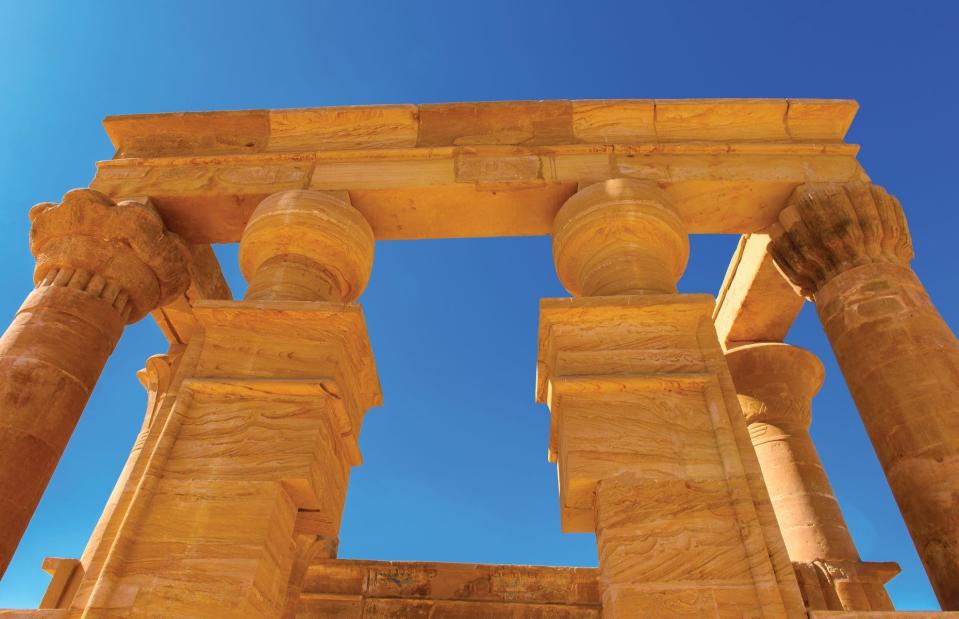
Anton_Ivanov/Shutterstock
Hidden away from the Nile Valley in the Western Desert is one of the best-preserved sites from the Late Period. Built by the Persian King Darius I (522–486 BC) this temple honours Amun, the Egyptian fertility god. Within the site, there is a row gate that opens up into a pavilion where all of the temple’s original columns still stand.
Pyramid of Khafre, Giza Plateau, Cairo
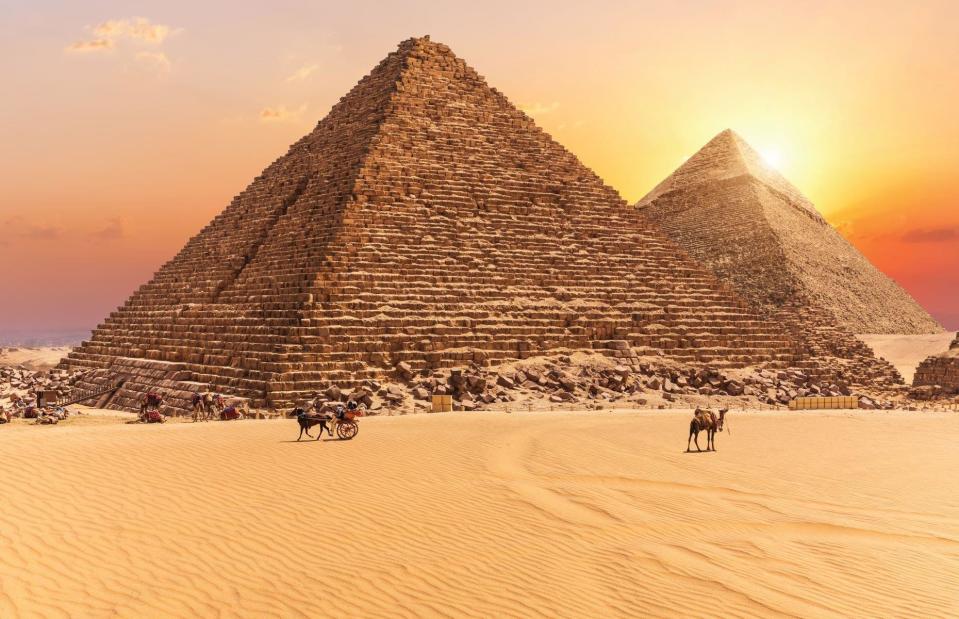
AlexAnton/Panther Media GmbH/Alamy
Built for the great pharaoh Khafre who was the second son of Khufu and the fourth king to rule during the fourth dynasty – this breathtaking monument is the second largest pyramid in Giza. Dating back to around 2500 BC, the structure was built on a higher elevation on the plateau than the Great Pyramid, making it look an extra 33 feet (10m) tall. In reality, the Pyramid of Khafre originally stood roughly 471 feet (143m) high while the Great Pyramid dominated at around 483 feet (147m).
Temple of Philae, Aswan
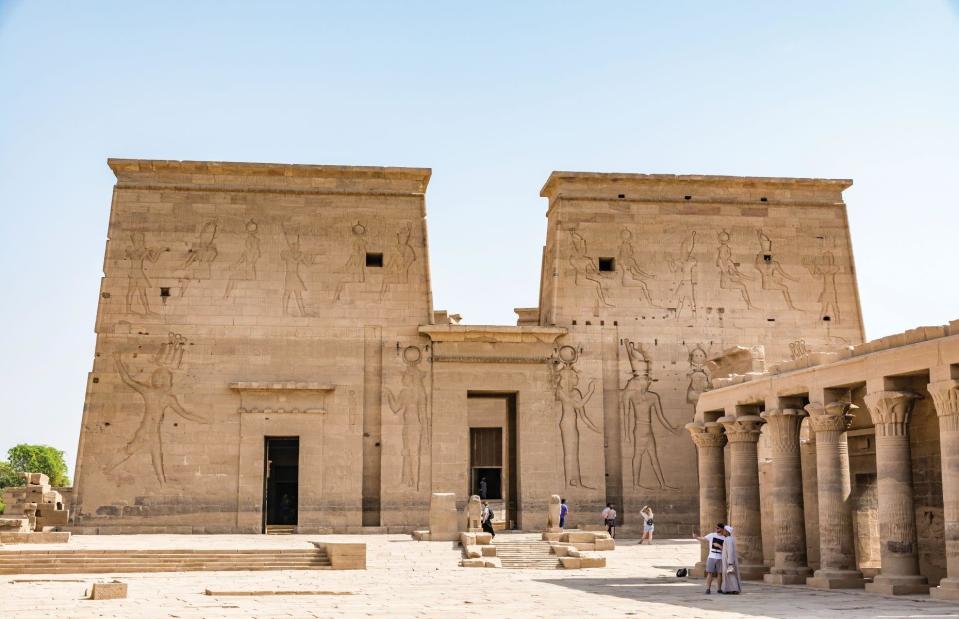
Tomasz Czajkowki/Shutterstock
Founded in the sixth century BC, this magnificent temple is thought to be one of the last constructed in the classical Egyptian style. Built to honour the goddess of Isis, the temple was a sacred spot for Egyptians, Nubians and Romans, with much of the remaining structures built during the Ptolemaic era (305–30 BC). No longer in its original location, the temple was moved to higher ground during the 1960s to save it from damage caused by the Aswan High Dam project.
Temple of Kom Ombo, Aswan
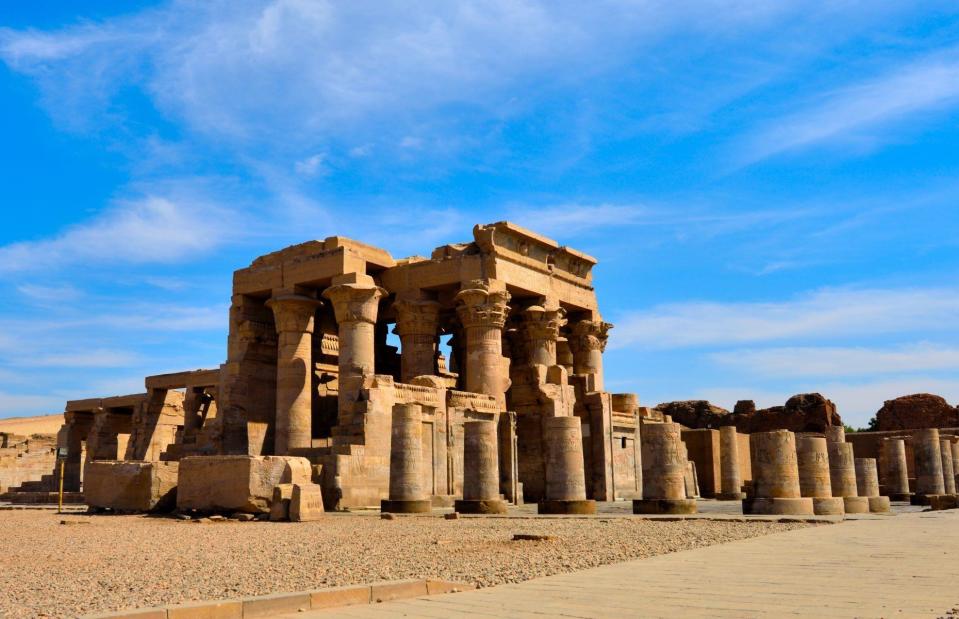
John Le/Shutterstock
Built during the late Ptolemaic dynasty (180–47 BC), this striking double temple is the only one of its kind in Egypt. The structure had two separate entrances, two courtyards, two halls and two sanctuaries – one dedicated to the falcon-headed god Horus and the other to the crocodile god Sobek. Although the site has experienced its fair share of destruction including erosion, earthquakes and floods, archaeologists are still uncovering buried areas of the complex.
Temple of Hathor, Dendera
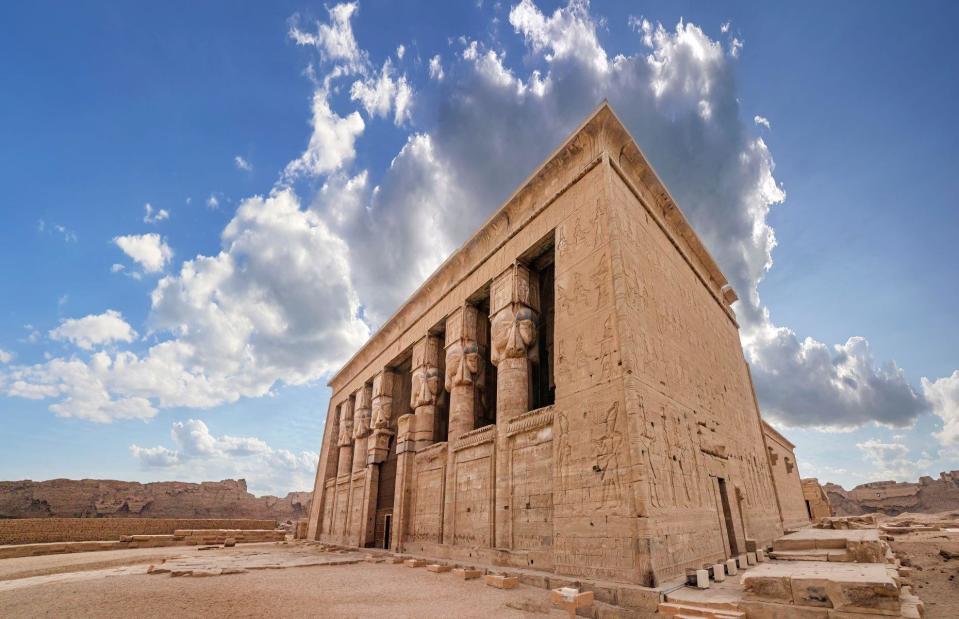
akimov Konstantin/Shutterstock
Another structure shaped by Roman influence, the Temple of Hathor was built in the late Ptolemaic period during the reign of Ptolemy XII and Cleopatra VII. The beautifully preserved temple features dedications to Ptolemaic and Roman rulers alongside traditional images showing Egyptian religious rites and rituals.
Temple of Hathor, Dendera
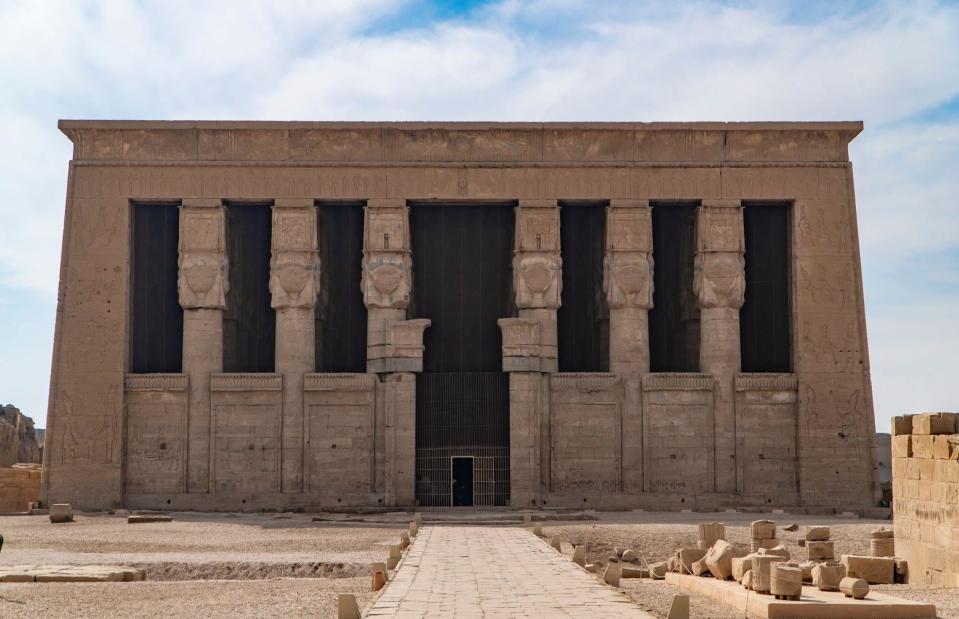
Merlin74/Shutterstock
This photograph captures the impressive entrance to the Temple of Hathor, built during the reigns of the Roman emperors Domitian (AD 81–96) and Trajan (AD 98–117) in Upper Egypt. Stretching across an area of around 40,000 square miles (103,600sq km), the complex is famed for being one of the best-preserved ancient sites in Egypt.
Hypostyle hall, Temple of Hathor, Dendera
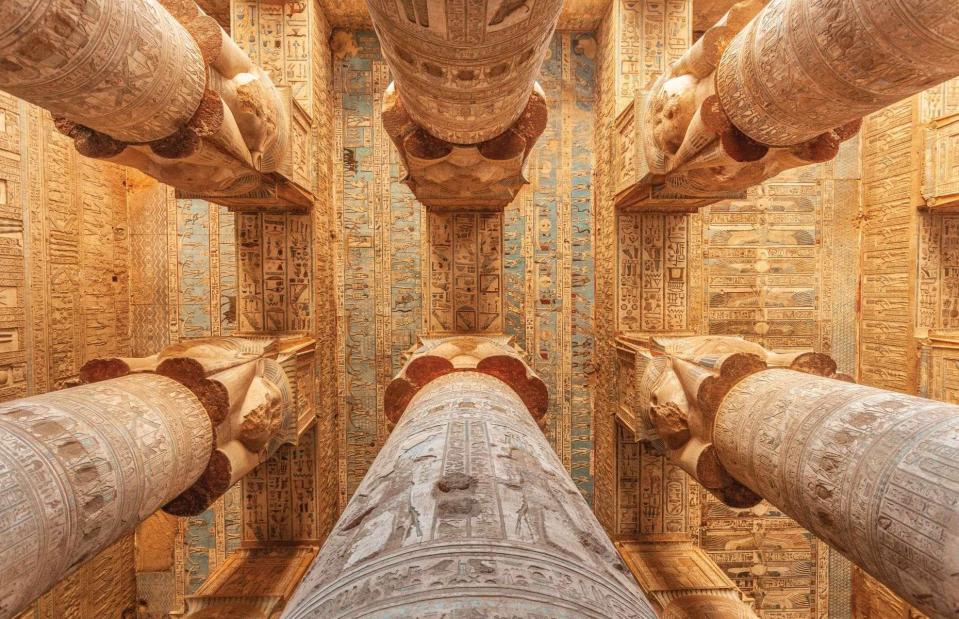
Cortyn/Shutterstock
Situated within Dendera, one of the most well-preserved temple complexes in Upper Egypt, the Temple of Hathor’s hypostyle hall is its most breathtaking feature. A masterpiece of Egyptian design, the hall’s impressive ceiling (pictured) features finely detailed artwork that has been beautifully preserved for centuries.
Roman Fortress, Ain Umm Labakha, Kharga Oasis
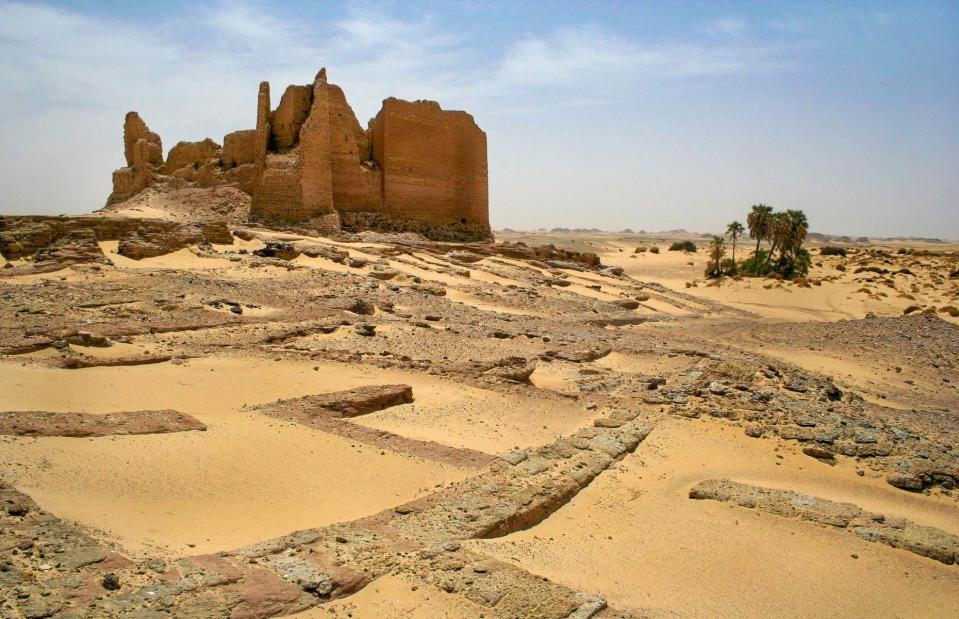
Cortyn/Shutterstock
Located at the Kharga Oasis within Egypt’s Western Desert, the remains of this ancient Roman military structure still shows evidence of thick defensive walls and towers. Made of mud brick, at one time the walls helped keep the local settlements and trade route protected from attacks.
Pyramids and Great Sphinx of Giza, Giza Plateau, Cairo
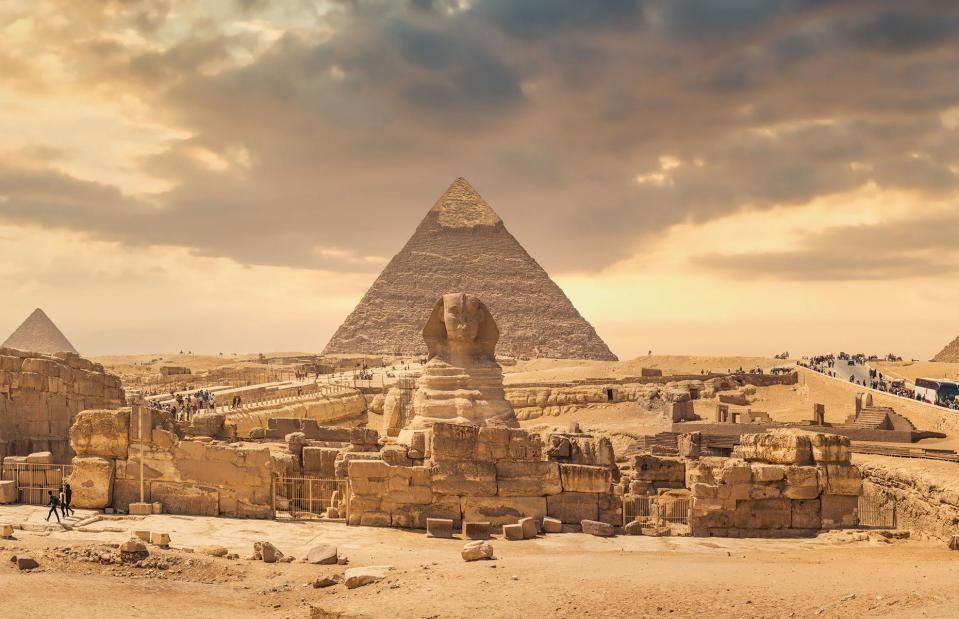
givaga/Shutterstock
Possibly the most famous ancient site in the world, the Giza Plateau crowns the fringes of Egypt’s capital Cairo. The plateau is home to a number of the greatest ancient landmarks ever discovered including the Great Pyramid of Giza, the Pyramid of Menkaure, the Pyramid of Khafre and the Great Sphinx. It's thought to have taken thousands of skilled craftsmen and labourers decades to build these mammoth structures. Today, the site typically draws millions of tourists each year and is the oldest of the Seven Wonders of the Ancient World.
Find out more
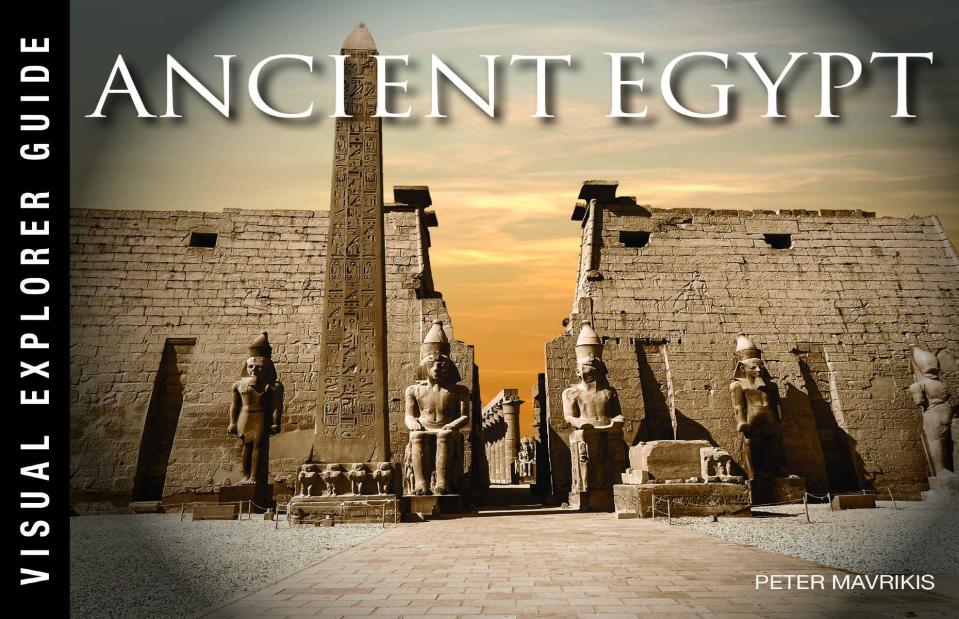
Courtesy of Amber Books
All images were taken with permission from the book Ancient Egypt: Visual Explorer Guide by Peter Mavrikis, published by Amber Books Ltd and available from Amazon.
Now, explore these photos of the amazing worldwide wonders we’ve just discovered

